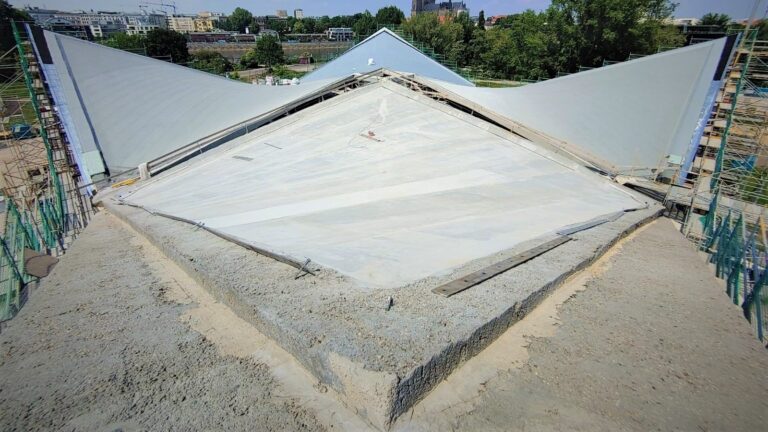
Prestressed Concrete Girder
B8
The B8 program is used to calculate reinforced concrete beams and pre-tensioned girders (long-line method). The software performs all required verifications of the load-bearing capacity (also for the accidental and earthquake design situations) as well as serviceability verifications. The untensioned and pre-tensioned reinforcement including its prestressing in the prestressing bed is specified. The user is supported by a pre-design during the initial input and a guide if verifications are not fulfilled.
Discover now more programs from the section Reinforced Concrete!
SHOW MOREMaterial
- Concrete grades specified in the standard from C30/37 to C100/115 for the girder and C16/20 to C100/115 for the cast-in-place concrete supplement
- Optional definition of a gradual application of the pre-tensioning force
- Optional definition of reduced material safety coefficients for pre-cast components
- Optional consideration of a thermal treatment
- Increased compressive strength of the young concrete at the time of tensioning force application is possible
Structural systems
Girder types
- Girder with parallel flanges
- Symmetrical and asymmetrical girders with saddle or groove
- Single-pitch roof girder
Structural systems:
- The user can calculate the girder in the final state and during its storage, as a single-span girder or as a cantilevered single-span girder
- For the erecting state, the user can examine a separate structural system aligned to the location of the suspension points
- The structural systems that result from auxiliary supports installed during the casting of the cast-in-place concrete complements are automatically taken into account in the calculation of the cross-sections
Shapes of cross-sections
- Rectangular cross-sections
- T-beams
- Two-webbed T-beams
- Layered cross-section
- The calculation of a single cross-section is also possible
Optional cross-section complement
- Solid slab
- Solid slab with pre-fabricated formwork
- Complement with additional layers
Loads
- Uniformly distributed linear loads
- Concentrated loads and moments
- Trapezoidal loads and triangular loads
- Loads can apply simultaneously or alternatively
Ultimate limit state and serviceability limit state
- Bending with longitudinal force (including resisting tensile force coverage)
- Shear resistance, for cast-in-place complements including the bearing capacity of the joints
- Lateral buckling in the installed state and in the erecting state (method by Stiglat and Mann)
- Determination of the tensile splitting reinforcement
- Anchoring of the prestressing reinforcement
Serviceability Limit State
- Concrete stresses, steel stresses (prestressed steel, reinforcing steel)
- Crack width (loading, minimum reinforcement), verification of the decompression, if required
- Deflection for a selectable load combination of the SLS with consideration of state II including tension stiffening and shrinkage
- Changes in length due to temperature, creep and shrinkage
Reinforcement
- Multi-layer pre-tensioned reinforcement with insulation, if applicable
- Multi-layer untensioned reinforcement
- It is assumed that the reinforcement runs in a straight line in parallel to the upper or lower flange.
Document file formats
- Word
- Printer
Output
- Output of various verifications in tabular or graphical form and with intermediate results is possible
- Verifications in the ultimate limit state
- Verifications in the serviceability limit state
Import options
- ASCII file
Export options
- Word
- FRILO XML
Reinforced concrete
- EN 1992
- DIN EN 1992
- ÖNORM B 1992
- PN EN 1992
- BS EN 1992
Still selectable:
- DIN 4227 T.1
- DIN 1045-1
Support resources
News

“With the FRILO Suite, we benefit from the use of all programs”
With the switch to the FRILO Suite, the engineering office concon has decided to rely on the FRILO subscription model. The reasons of the long-standing customer are manifold.

FRILO & CARBOrefit® | The calculation with carbon concrete pays off
With CARBOrefit® an process that enables renovation and reinforcement with carbon concrete has been integrated into the FRILO Software.






